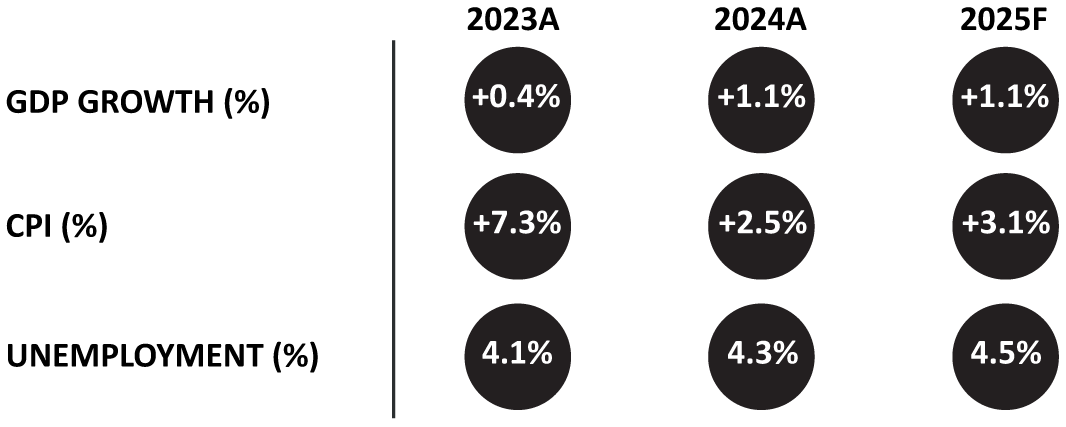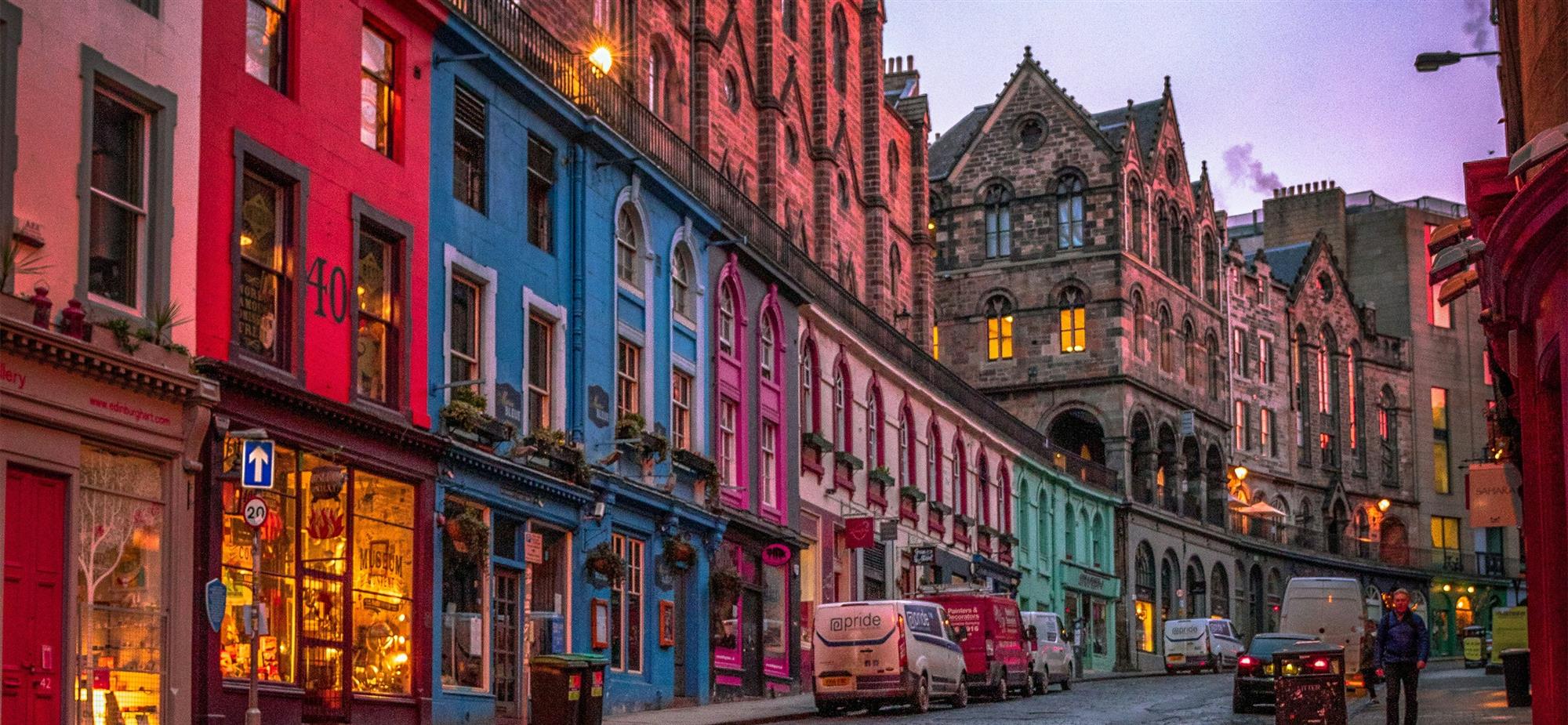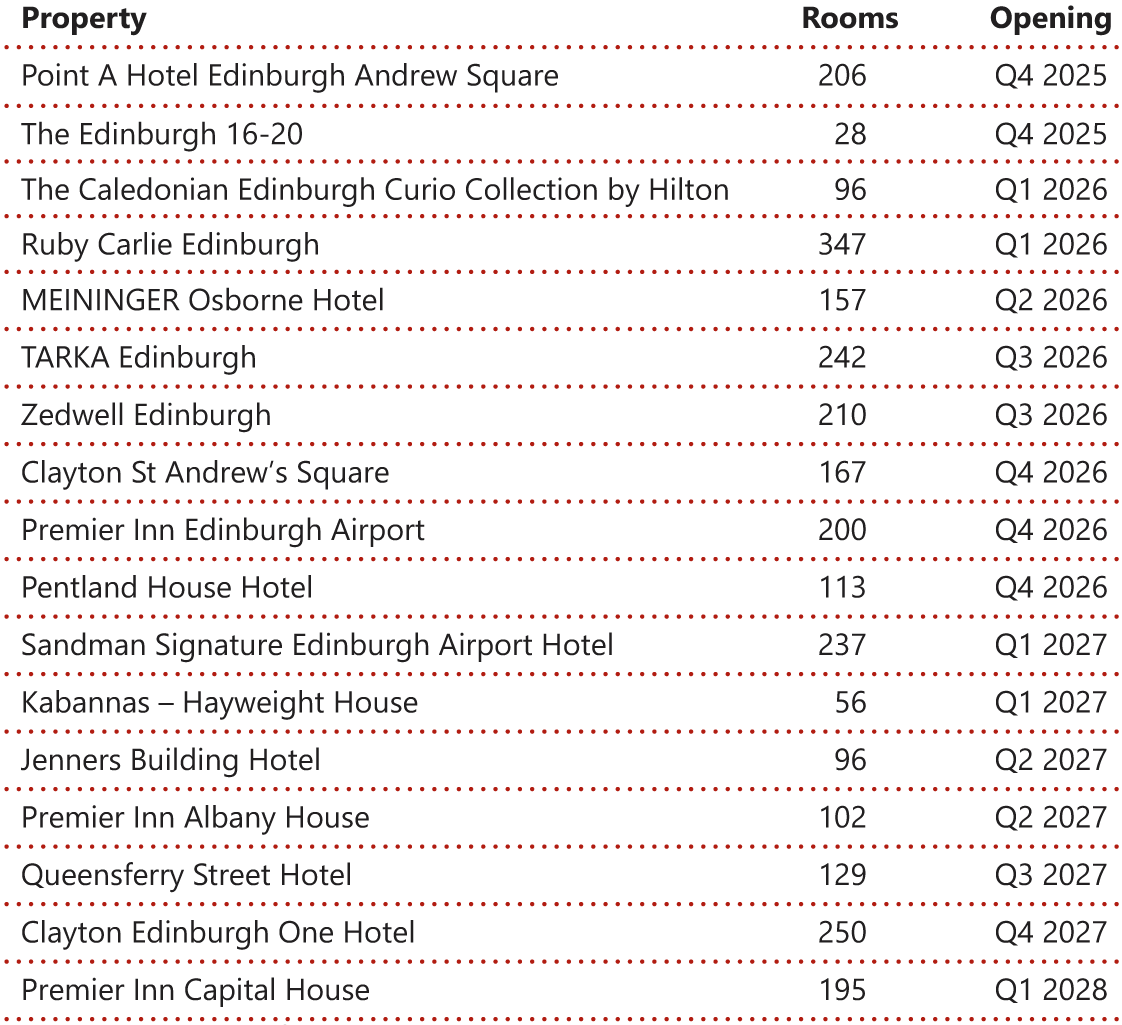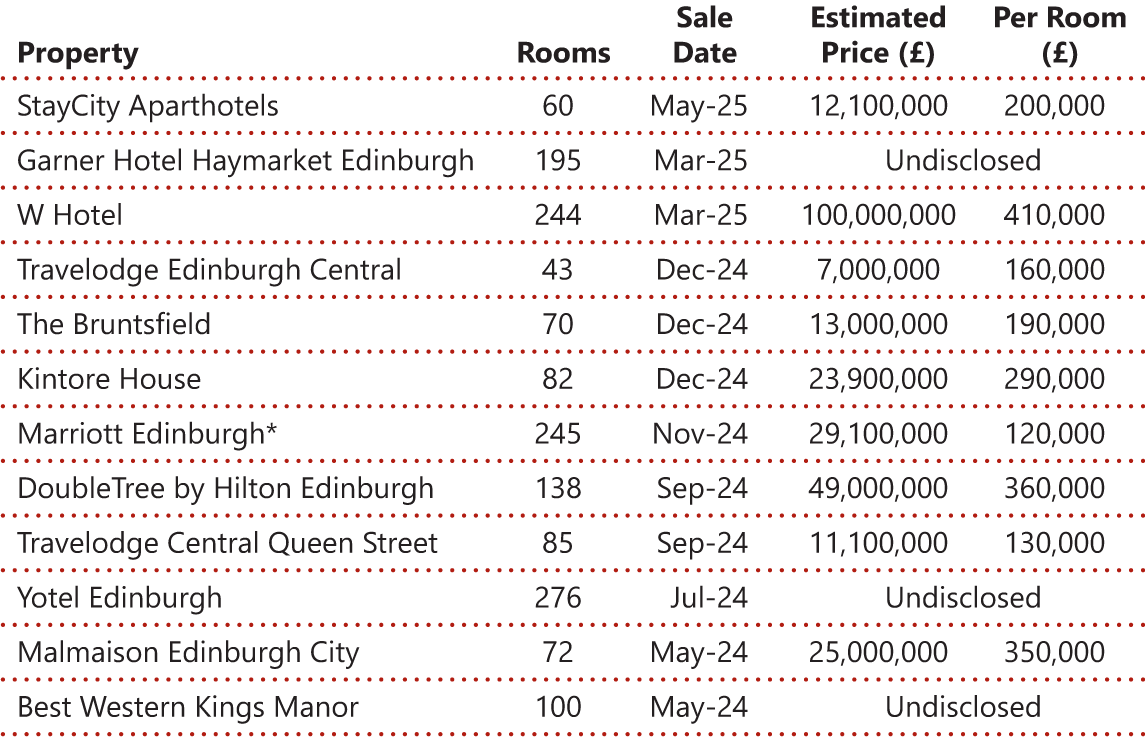
Edinburgh is the economic, cultural and political capital of Scotland and is considered one of the UK’s primary powerhouses. This reputation has fuelled significant population growth over the past decade, with the Edinburgh metropolitan area reaching nearly 559,000 residents in 2024, a 12.0% increase since 2014. A compact city steeped in history, with notable cityscapes and exceptional views, Edinburgh is a renowned weekend-break destination with an international airport recording strong passenger growth and fast rail links on the East Coast Mainline branch. As the second most visited city in the UK after London, Edinburgh’s appeal lies in its cultural vibrancy and strategic location. Moreover, the Edinburgh Festival Fringe continues to be a global cultural highlight. In 2024, the festival sold approximately 2.6 million tickets (compared to 2.5 million in 2023), reaffirming its status as the largest annual arts festival in the world.


Source: HVS Research
Economic Indicators – UK

Source: International Monetary Fund (IMF), April 2025
Tourism Demand
Over the past decade, visitation to Edinburgh and the Lothians has increased by more than 25.0%, reaching over 5.3 million visitors in 2023, reflecting a compound annual growth rate (CAGR) of 2.6% between 2014 and 2023. While Edinburgh has historically attracted a balanced mix of domestic and international travellers, trends show a stronger rise in international tourism. Domestic visitation grew at a reasonable CAGR of 1.5% (+14.5% overall), whereas international visitation increased significantly, growing at a CAGR of 4.3% (+26.5% overall). As a result, the share of international visitors increased from 38.5% in 2014 to 44.4% in 2023. Domestic visitation to Edinburgh experienced a 6.1% decline in 2024, and while international visitation data for the city were not available at the time of writing, we note that international visitors to Scotland overall increased by 9.8% year on year. As visitation to Edinburgh and the Lothians represented almost 60.0% of the country’s total in 2023, we assume that growth for the capital has followed the same trend.
This rise in visitation has been accompanied and supported by significant developments at Edinburgh Airport, which has steadily expanded its network of European routes and added transatlantic connections. Between 2014 and 2024, total passenger numbers grew from 10.2 million to 15.8 million – an increase of 55.1%, equivalent to a CAGR of 4.5%. With domestic passenger numbers witnessing a slight decline over the decade, the overall growth was entirely driven by international traffic which more than doubled to reach just over 11.0 million passengers in 2024. International visitors are typically more likely to require overnight accommodation, contributing to sustained demand for hotel rooms across the city and the wider region.
Rising demand for overnight stays in Scotland’s capital has sparked growing concerns about the sustainability of tourism. After years of debate, the Scottish Parliament passed the Visitor Levy Bill in May 2024, granting local authorities the power to introduce a levy on overnight accommodation. The key aims of the legislation are to generate additional revenue for local services and infrastructure, mitigate the pressures of tourism and support sustainable tourism development. Under this framework, the City of Edinburgh Council plans to implement a 5.0% levy on paid overnight stays from July 2026, with funds to be allocated to city operations, infrastructure and cultural initiatives.
At the same time, increasingly restrictive planning policies and growing demand have driven upward pressure on average daily rates in the city. With the upcoming introduction of the visitor levy, this pressure is likely to intensify. Looking ahead, we anticipate this will either lead to a stabilisation of the market or prompt a shift in the hotel offering toward more lifestyle- and luxury-oriented products.

Hotel Performance
Alongside the rise in visitor numbers over the last decade, supply has increased significantly. Between 2014 and 2024, the number of hotel rooms in Edinburgh increased by 23.1%, reaching nearly 19,000, with growth driven almost entirely by properties operating under franchise or management agreements. The city’s growing popularity and its ability to attract both business and leisure travellers throughout the year have ensured that this additional supply has been fully absorbed.
As in most global destinations, tourism demand in Edinburgh experienced a sharp decline in 2020 due to the pandemic. Recovery took hold by mid-2021, paving the way for a notable surge in average daily rates from 2022 onwards. By 2023, occupancy levels had almost fully rebounded to pre-pandemic benchmarks, while average rates recorded robust growth in both 2023 and 2024, resulting in strong double-digit RevPAR growth for both years. By the end of 2024, this momentum pushed real RevPAR to over 20.0% above 2019 levels. These exceptional results are driven not only by strong demand but also Edinburgh’s rising global profile, elevating citywide RevPAR to among the highest in Europe.
RevPAR on the Rise: Double-Digit Growth Momentum


Source: HVS Research
Changes to Supply
As of mid-2025, Edinburgh has 17 hotels in its development pipeline, scheduled to open between late 2025 and 2028. These projects will add just under 3,000 rooms, equivalent to nearly 15.0% of the city’s existing hotel supply. Around two-thirds of the pipeline is still in the planning stages, and the majority of the properties involve conversions of former office or retail space. Notably, nearly two-thirds of the upcoming supply consists of limited-service or lifestyle properties, with brands such as Point A, Zedwell and MEININGER, as well as three new Premier Inn locations, leading the way. The pipeline also includes an expansion of The Caledonian Edinburgh, part of Hilton’s Curio Collection, which is undergoing renovation and will add 96 rooms to its inventory by early 2026.
Hotel Pipeline

Source: HVS Research
Investment Market
Transaction levels were particularly healthy in 2024, with around ten properties transacting and a significant uptick in overall volume compared to a slower 2023. The average price per key stood at approximately £215,000, ranging from £119,000 to £355,000. This positive trend has continued into 2025, highlighted by the sale of the W Hotel in March for around £100 million, equating to roughly £410,000 per key.
Hotel Transactions

*Allocated as part of a portfolio transaction
Source: HVS Research
Outlook 2025
The Edinburgh hotel market is thriving. Buoyed by global recognition, world-class events and stronger air connections, the city is seeing record demand. With a wave of new openings on the horizon, the outlook remains highly positive, offering strong opportunities for investment and innovation.
Value Trends 2024 vs 2023

Source: HVS Research


0 Comments
Success
It will be displayed once approved by an administrator.
Thank you.
Error